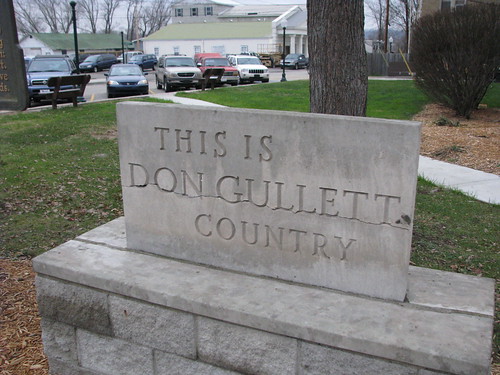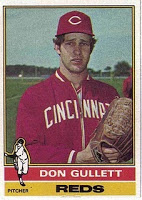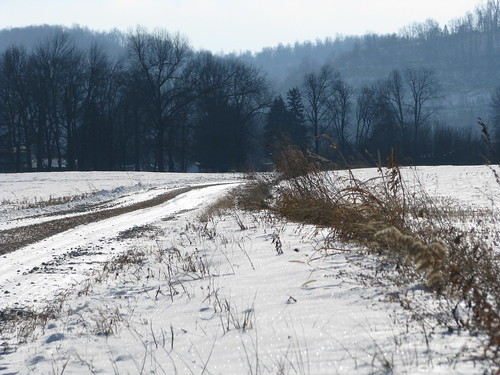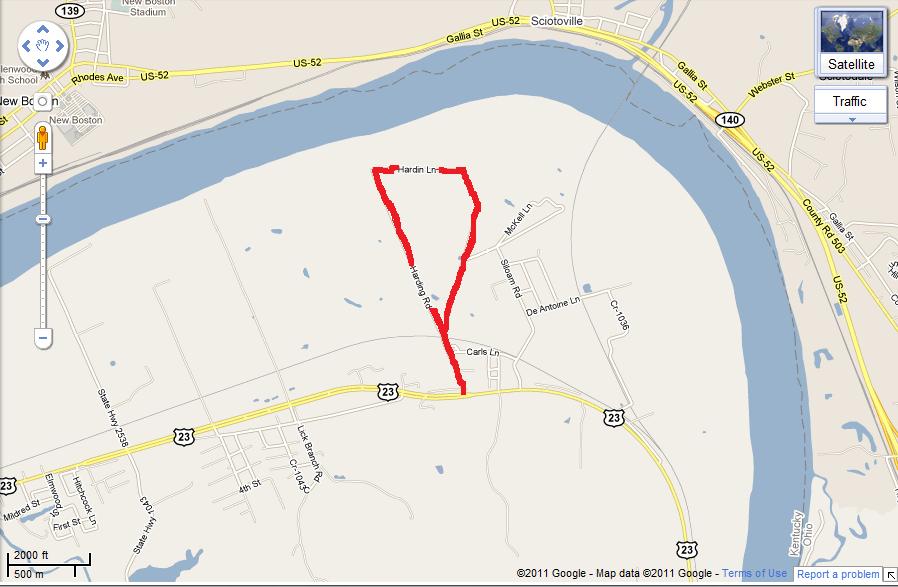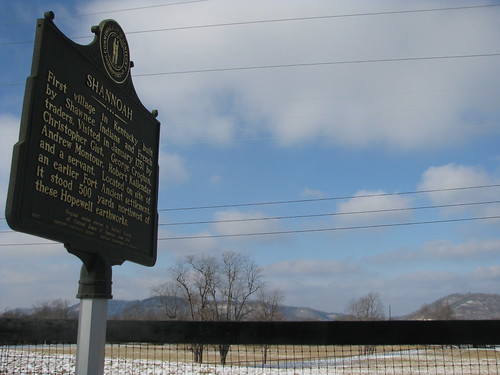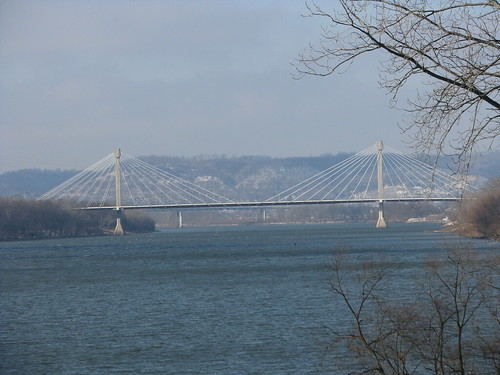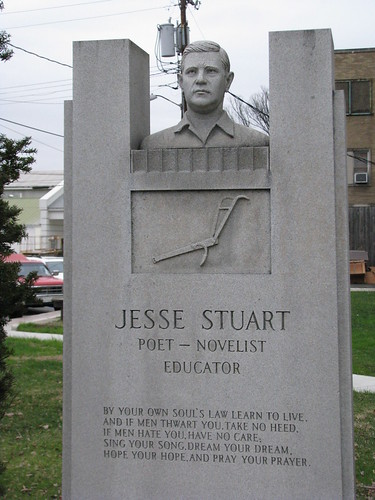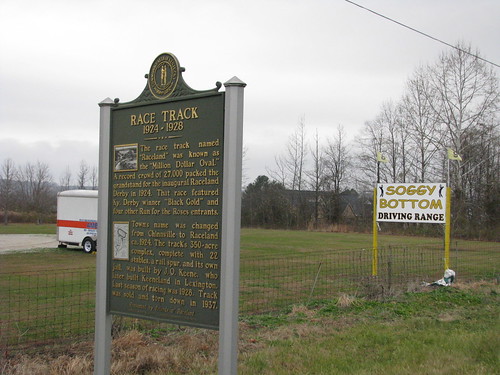 |
| Raceland Race Track Historic Marker, Raceland, Ky. |
The town of Chinnville changed its name in 1924 when its greatest tenant arrived: a horse track. renamed Raceland after the new track. Raceland, the track, hosted its first race, the “Ashland Stakes,” on July 10, 1924 before a crowd of 10,000. A few days later, a crowd of 27,000 witnessed the inaugural Raceland Derby, which featured five Kentucky Derby contenders including its victor Black Gold.
The one-mile oval track, nicknamed the “Million Dollar Oval” was apparently quite splendid. The track was surrounded by a white picket fence covered in “rambling red roses. The bridle paths and front lawn were paved in red tapestry brick, matching the clubhouse, steward’s stand and judges stand. The infield contained a alke and several sunken gardens.” [*]
Of course, it should come as no surprise to Lexingtonians that Raceland’s course was a beautiful racing venue. It was founded by Jack Keene who would go on to found his namesake racecourse, Keeneland, eleven years later.
Raceland, however, did not fare so well. Due to a lack of funds, the course closed in 1928 after only four seasons. Today, very little remains but a historic marker marks the spot. And so does a golf driving range.


